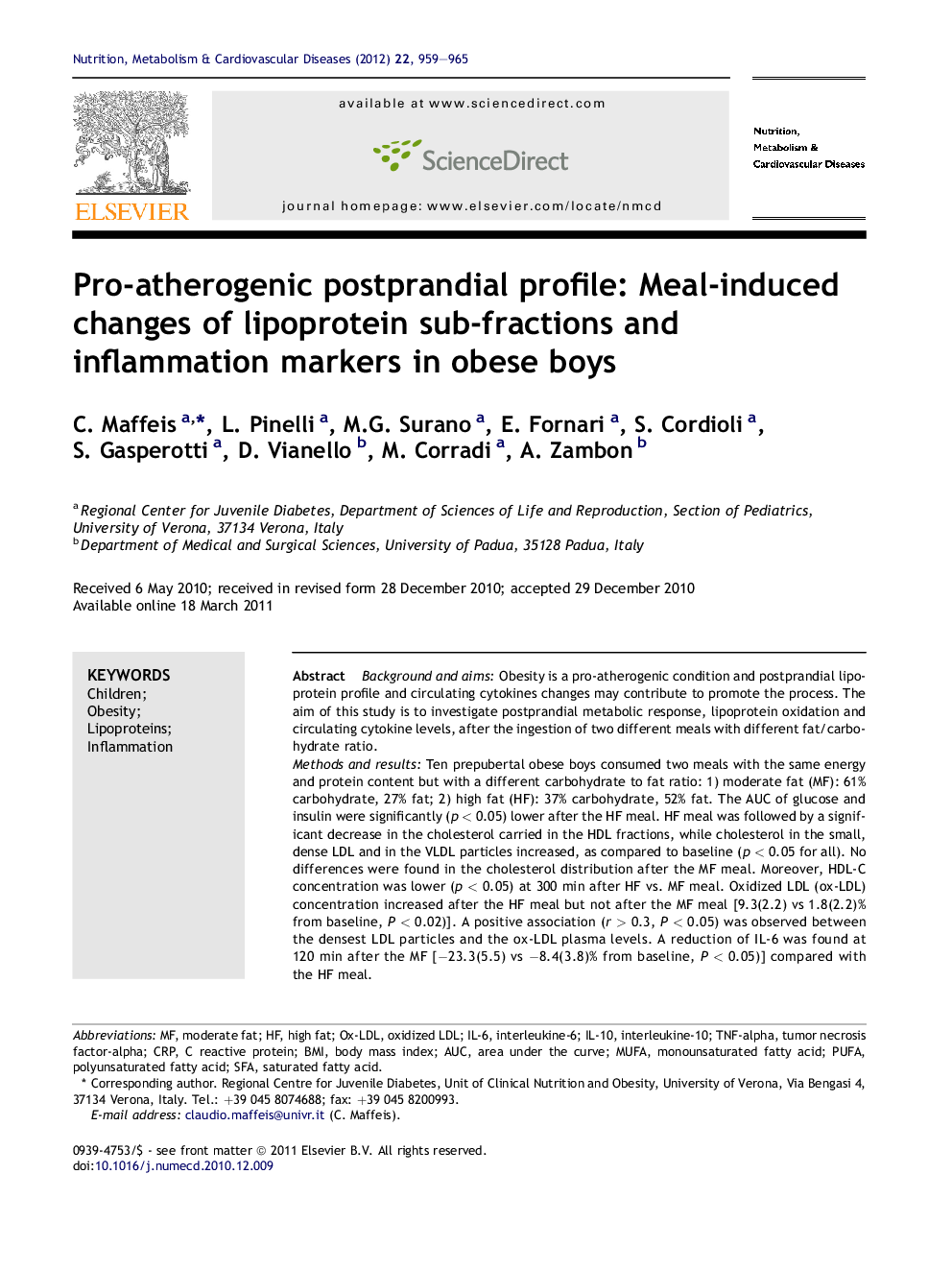| Article ID | Journal | Published Year | Pages | File Type |
|---|---|---|---|---|
| 5996810 | Nutrition, Metabolism and Cardiovascular Diseases | 2012 | 7 Pages |
Background and aimsObesity is a pro-atherogenic condition and postprandial lipoprotein profile and circulating cytokines changes may contribute to promote the process. The aim of this study is to investigate postprandial metabolic response, lipoprotein oxidation and circulating cytokine levels, after the ingestion of two different meals with different fat/carbohydrate ratio.Methods and resultsTen prepubertal obese boys consumed two meals with the same energy and protein content but with a different carbohydrate to fat ratio: 1) moderate fat (MF): 61% carbohydrate, 27% fat; 2) high fat (HF): 37% carbohydrate, 52% fat. The AUC of glucose and insulin were significantly (p < 0.05) lower after the HF meal. HF meal was followed by a significant decrease in the cholesterol carried in the HDL fractions, while cholesterol in the small, dense LDL and in the VLDL particles increased, as compared to baseline (p < 0.05 for all). No differences were found in the cholesterol distribution after the MF meal. Moreover, HDL-C concentration was lower (p < 0.05) at 300 min after HF vs. MF meal. Oxidized LDL (ox-LDL) concentration increased after the HF meal but not after the MF meal [9.3(2.2) vs 1.8(2.2)% from baseline, P < 0.02)]. A positive association (r > 0.3, P < 0.05) was observed between the densest LDL particles and the ox-LDL plasma levels. A reduction of IL-6 was found at 120 min after the MF [â23.3(5.5) vs â8.4(3.8)% from baseline, P < 0.05)] compared with the HF meal.ConclusionA simple change of â25% of energy load from fat to carbohydrate in a meal significantly improves postprandial pro-atherogenic factors in obese boys.
